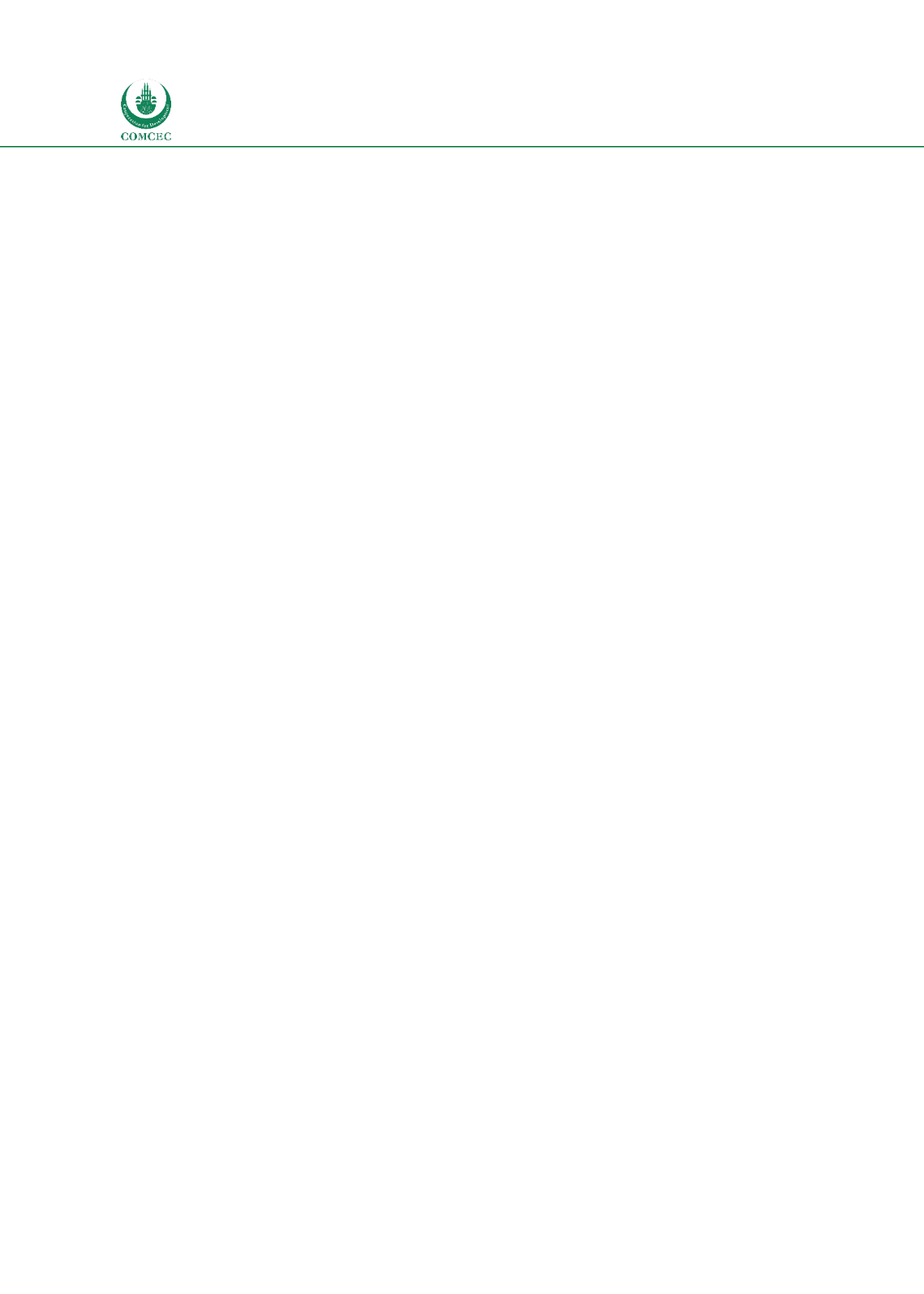

National and Global Islamic Financial Architecture:
Problems and Possible Solutions for the OIC Member Countries
72
4.3. Indonesia
Indonesia has a diversified financial sector with banks, insurance, nonbank financial
institutions (NBFIs) and capital market segments. Islamic finance was initiated with the
establishment of the Islamic cooperative
Koperasi Jasa Keahlian Teknosa
in 1980 in Masjid
Salman of the Bandung Institute of Technology (ITB), West Java Province. Thereafter, the first
fully-fledged Islamic bank,
Bank Muamalat Indonesia
(BMI) was formed in 1991 followed by
Bank Syariah Mandiri
(BSM), owned by Bank Mandiri in 1999. Currently, the country has 12
fully fledged Islamic banks (BUS), 22 Islamic banking windows (UUS), and 163 Islamic rural
banks (BPRS) holding total assets of nearly USD30 billion (nearly 5% market share) (OJK,
2016).
Indonesia has a robust nonbank financial sector. The insurance/
takaful
sector has 52 Islamic
insurance/
takaful
companies with assets totalling USD2.4 billion (5% market share). Other
Islamic NBFIs include more than 5000 Baitul Maal wat Tamwiil (BMT) operating mostly in
73,067 villages with total assets of at least USD0.5 billion, one state owned pawnshop
company, and 26 Islamic securities companies offering 85 Islamic securities products valued at
USD1.1 billion (4%market share) (OJK, 2016).
Islamic financial markets in the country include stock, money and sukuk market segments. The
Islamic stock market was introduced in 2000 and currently enlists 334 Islamic stocks
(constituting 40% of the total stocks) with total transactions of USD262 billion (55% of the
total stock market transactions) (OJK, 2016). Various Islamic money market instruments were
introduced in the country with total range of transactions in money market being between
USD60 million and USD130 million per day (Bank Indonesia, 2016a). The
Sukuk
market has 41
corporate
Sukuk
(10% of the total bonds) with transaction values of USD0.8 billion and 32
government
Sukuk
(25% of the total bonds) with transaction values of USD27 billion (Ministry
of Finance, 2015). Data from January 2016 show that that total value of Indonesian Global
Sukuk (SNI) has reached USD7 billion making it the largest issuer of the global Sukuk issuance
in the world (Ministry of Finance, 2016).
Various government agencies have taken different initiatives to foster the development of the
Islamic financial sector. Bank Indonesia (the central bank) released a blue print of Islamic
banking development in 2002-2012, identifying some pillars such as institutional
development, regulation and supervision, and education and familiarization of Islamic banking
practices (Bank Indonesia, 2002). After the regulatory role of the financial sector was
transferred to the newly established Indonesian Financial Services Authority (OJK) in 2011, it
released three strategic documents for different financial sectors: a road map of the Islamic
banking industry (2015-2019), a road map of the Islamic capital market (2015-2019), and a
road map of the nonbank Islamic financial institutions (2015-2019) (OJK, 2015). Bank
Indonesia is responsible for the monetary aspect, money market and macroprudential policy
(Bank Indonesia, 2016b). Hence, in addition to the roles of the OJK to improve Islamic finance,
Bank Indonesia has the legal capacity to conduct the Islamic monetary policy, regulate the
Islamic money markets and determine the macroprudential policies for both the Islamic and
conventional banks.
To speed up the development of Islamic finance, the President of Indonesia formally declared
the formation of the National Islamic Finance Committee (KNKS) in January 2016. As a national
champion body, KNKS consists of 10 economic and regulatory bodies that include Bank
















